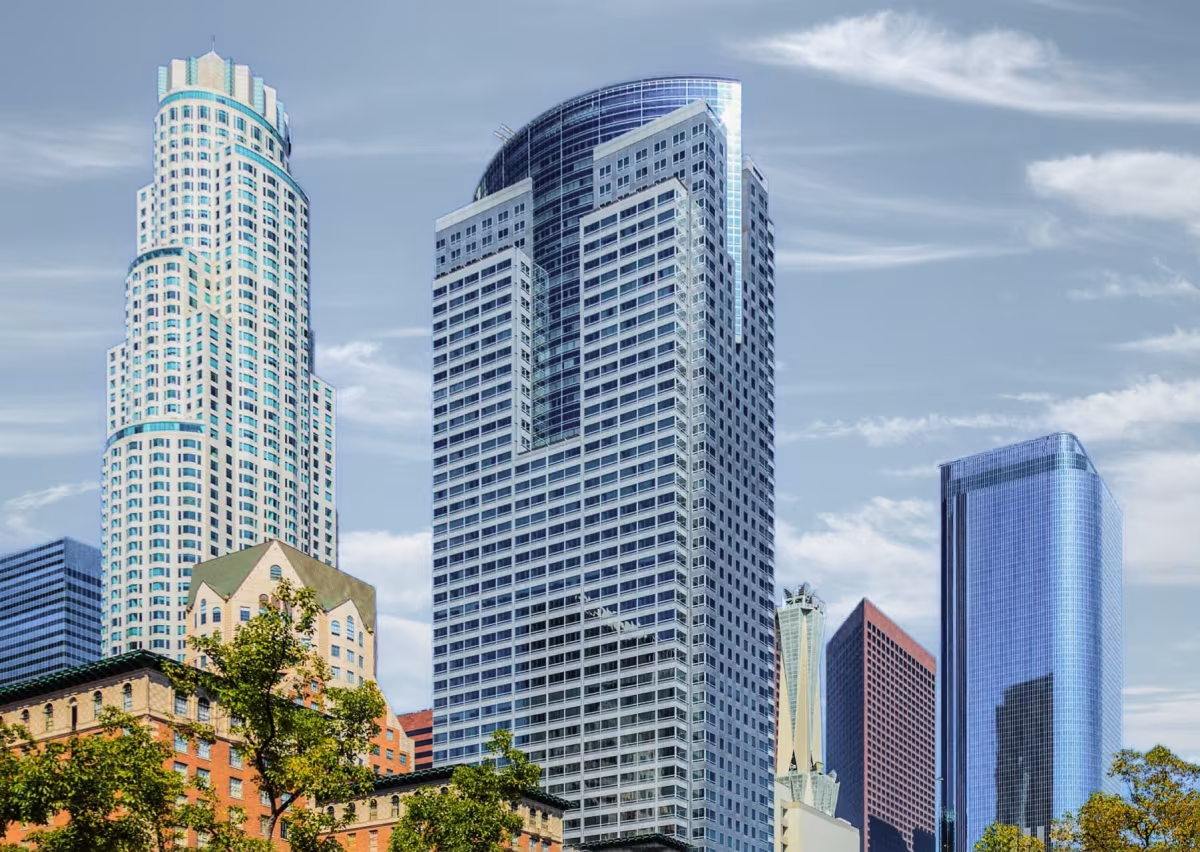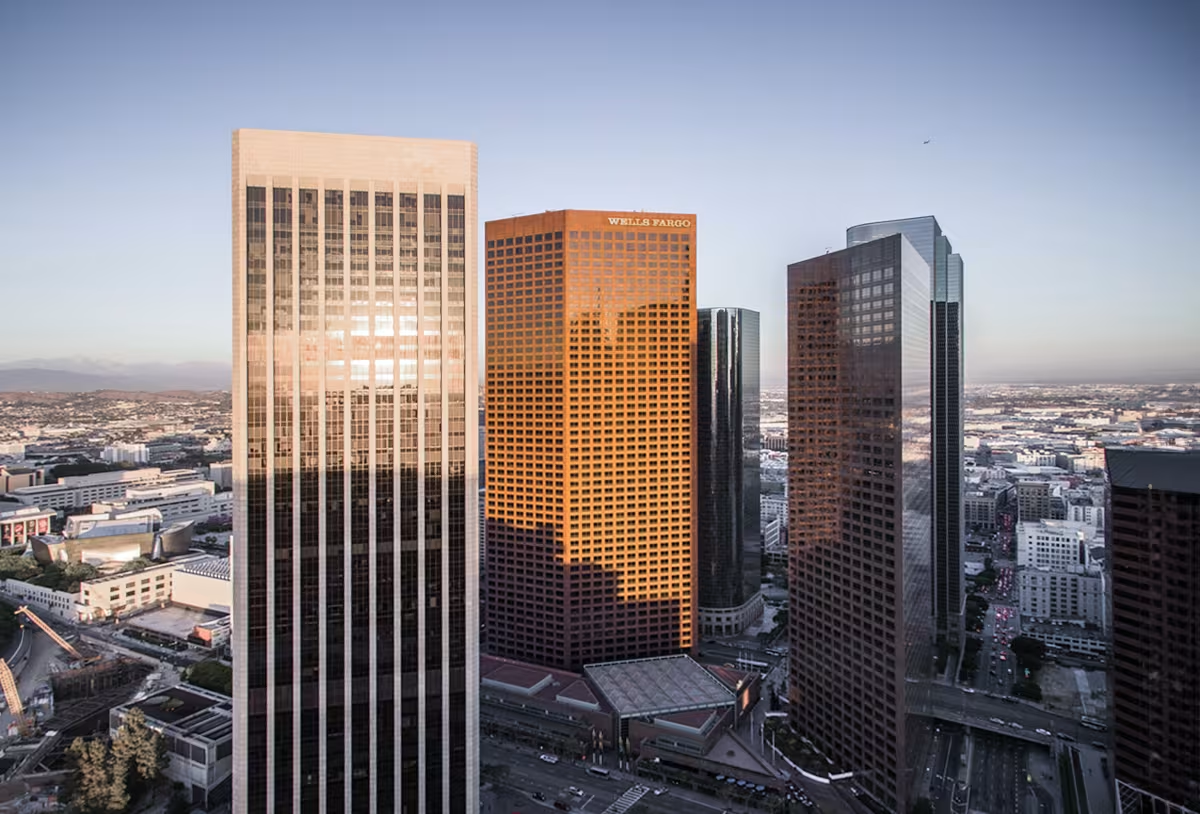Gas Company Tower vs Wells Fargo Tower


Comparing the Gas Company Tower and the Wells Fargo Tower is particularly interesting because they share the same skyline in Los Angeles, CA, and were both designed by Skidmore, Owings & Merrill. However, they were completed more than 8 years apart.
This offers a unique perspective on how the architect's style and the city's architecture evolved over time.
Height & Size
These two towers present an interesting contrast in their proportions. The Gas Company Tower rises higher at 748ft (228m), while the Wells Fargo Tower reaches 722ft (220m). However, the Wells Fargo Tower accommodates more floors with 54 levels above ground, compared to 52 floors in the Gas Company Tower.
This suggests different approaches to interior space design. The Gas Company Tower has an average floor-to-floor height of approximately 4.4m, while the Wells Fargo Tower has more compact floors averaging around 4.1m each.
These different proportions likely reflect the specific needs each building was designed to serve, whether driven by zoning regulations, client requirements, or the intended use of the spaces within. The contrast shows how architects can achieve different spatial experiences even when working with similar overall building scales.
Architectural Style
Both the Gas Company Tower and the Wells Fargo Tower were designed in line with the aesthetic conventions of the Postmodernism style.
The Gas Company Tower was designed at a moment when the Postmodernism style was already in decline, making it more of a lingering expression of the movement. In contrast, the Wells Fargo Tower style was already in decline, making it more of a lingering expression of the movement. In contrast, the Wells Fargo Tower was built when the style still carried greater cultural weight.
Uses
Both the Gas Company Tower and the Wells Fargo Tower were designed to serve as commercial towers, and that has remained their main use since their completion, serving similar roles in the urban fabric.
Structure & Facade
Both the Gas Company Tower and the Wells Fargo Tower rely on a Frame structural system.
A frame structure uses a grid of columns and beams to carry the building's loads. This frees the walls from structural duties, allowing for flexible floor plans and larger windows.
They also employ the same type of facade, a Curtain Wall facade.
A curtain wall is a non-load-bearing facade hung from the structural frame. It is anchored to floor slabs and transfers only its own weight and wind loads, allowing for sleek, glassy exteriors.
| Gas Company Tower | Wells Fargo Tower | |
|---|---|---|
| Skidmore, Owings & Merrill | Architect | Skidmore, Owings & Merrill |
| 1988 | Construction Started | 1981 |
| 1991 | Year Completed | 1983 |
| Postmodernism | Architectural Style | Postmodernism |
| Commercial | Current Use | Commercial |
| 52 | Floors Above Ground | 54 |
| 8 | Floors Below Ground | 5 |
| 228 m | Height (m) | 220 m |
| 165530 | Built-up Area (m²) | 129200 |
| 28 | Number of Elevators | 29 |
| Frame | Structure Type | Frame |
| Steel | Vertical Structure Material | Steel |
| Concrete | Horizontal Structure Material | Concrete |
| No | Facade Structural? | Yes |
| Glass, Steel | Main Facade Material | Reddish Brown Granite, Glass |
| Turner Construction | Main Contractor | Turner Construction Company |
| Thomas Properties Group | Developer | Thomas Properties Group |
| Frank Stella | Collaborating Artist | Robert Graham |
| CA | State | CA |
| Los Angeles | City | Los Angeles |
| 555 West 5th Street | Address | 333 S. Grand Avenue |